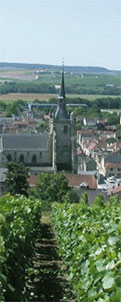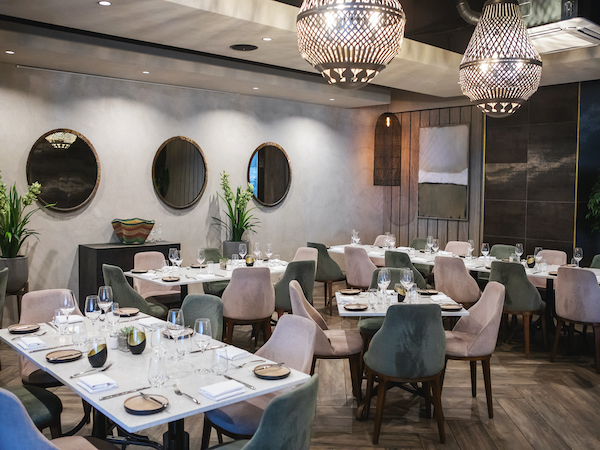News
Stars, bubbles and heavenly states
Tuesday, August 21st, 2007
by Lara Boshoff
I’m terribly sorry, but I’m going to have to start with a much overused quote about champagne from Dom Perignon (because it fits in perfectly with what I’m trying to tell you), supposedly when he first discovered the sacred drink by accident – “Come quickly! I am tasting stars!”
And I’m afraid stars – glorious, splendiferous stars – are what you do taste when sipping on a chilled champagne, almost as though when the bubbles rise up inside you, they pull a smile up along the way.
Interestingly, the stars and the moon have another role to play in the form of the more natural, holistic winemaking approach called biodynamie.
Intuitive winemaking
Now hold your breath. Biodynamic views, apart from the organic emphasis and certain other less mainstream growing practices, also hold that vineyard operations are best run in harmony with the positions of the planets and the phases of the moon as these natural cycles influence the grape-growing process.
Times when certain planetary aspects occur are thought to be ideal for growing either the roots, leaves or fruits depending on their element (earth, air, water or fire).
It still remains to be seen how much this intuitive art of the winemaker will be accepted in the mainstream amongst the usual temperature, humidity and mineral composition of the soil concerns.
Although, when we’re talking champagne with its quixotic edge, it might be more easily dreamed.
This ancient art is already practiced to a certain extent in the US and France, with Chateau Romanin going all the way by only working on the vines then the moon harmonically aligns with fire-related constellations.
This seems to stoke romantic myths of the essence of champagne even more.
The art of Champagne tasting
The trend in South Africa seems to be that we usually go for the safe, big popular houses such as Veuve Clicquot or Moët et Chandon, and don’t often try something different. But we’re missing out. There are a myriad of other houses to try with wonderful offerings, which can knock you sideways.
A good place to start is by attending a French Champagne tasting and heartwarming, delicious peasant-style dinner at ‘French Champagne Specialists’, Cuvées Classiques, who source high-quality ‘boutique’ champagnes for sale as well as host tastings and private functions on their long wooden tables in their ‘cellar’ in Woodstock, Cape Town.
Run by the enthusiastic team of John Newton, Hirsh Aronowitz, Cathy Skinner and Jane Greenwood, one gets the overwhelming sense that they love what they do.
I recently had the opportunity to attend a tasting and dinner, which I thoroughly enjoyed (so much so, that I left my carefully crafted notes behind) and came away dreaming of aggressive bubbles, gentle bubbles, slow to rise bubbles and hurried bubbles with a renewed appreciation for the smaller, more elegant bubbles.  We umm-ed and aah-ed over ten French Champagnes – Cuvées wanted to introduce the available range – including non-vintage Brut champagnes, vintage Blanc de Blancs, rosés and surprisingly two slightly sweeter champagnes, which caused a few mumblings from the crowd along the lines of “just try harder to stretch your tastebuds and you’ll enjoy it” to “but why should one have to work at it, the pleasure should just flow”, of which the latter has become my new mantra. Sweet champagne is not for me.
We umm-ed and aah-ed over ten French Champagnes – Cuvées wanted to introduce the available range – including non-vintage Brut champagnes, vintage Blanc de Blancs, rosés and surprisingly two slightly sweeter champagnes, which caused a few mumblings from the crowd along the lines of “just try harder to stretch your tastebuds and you’ll enjoy it” to “but why should one have to work at it, the pleasure should just flow”, of which the latter has become my new mantra. Sweet champagne is not for me.
John gently took us through various vintage and non-vintage champagnes in a very humble and accessible way, explaining the non-vintage releases of a house are generally the measure of their quality, since they express the time-tested offerings and not the once-off limited release vintage year climaxes.
We sipped on Lallier Brut, Lacombe Brut Grand Cru, Marguet Rosé, Colin Rosé, Lallier Blanc de Blanc, Duval-Leroy Blanc de Chardonnay, Lacombe Vintage 1999, Drappier Vintage 2000 and sweet champagnes Duval-Leroy Lady Rosé and Drappier Carte d’Or Demi-sec.
What an experience.
Champagne facts
1. To be able to call it ‘Champagne’ the wine must be made from grapes grown in the Champagne region – 31 000 hectares of carefully delimited vineyards in the north-east of France. When we make it here using the same methods, we call the sparkling wine Méthode Cap Classique.
2. Only three cultivars are permitted in the making of champagne: Pinot Noir, Chardonnay and Pinot Meunier.
3. Through geographic and climatic reasons, French champagnes retain unique and distinctive flavours. The exceptional quality of champagne is essentially due to the very particular qualities of the subsoil, which is made up of layers and layers of chalky sediment. And, because of its extreme northerly position, the area of Champagne is subject to a very particular range of temperatures, sunshine, rainfall and prevailing winds. These factors combine to produce wines that ripen with full fruit flavours but not excessive levels of sugar, a good natural alcohol content and sustained but not excessive acidity.
4. It is critical to the finesse and natural elegance of champagne for the grapes not to be overripe when picked.
Click here for food and champagne pairing notes Champagne tasting at Cuvées Classiques
Champagne tasting at Cuvées Classiques
The next champagne tasting and dinner at Cuvées Classiques is on Tuesday, September 11 at 6.30pm (the others are fully booked already) at a cost of R300 per person.
Seven champagnes will be tasted alongside two guest chefs who will prepare complementary dishes to accompany. Basic food and champagne pairing guidelines will be discussed.
To book call Cathy or Jane on 021-461 7498 or email: info@ccq.co.za
Champagne houses represented by Cuvées Classiques
Champagne Drappier
Champagne Jacquesson (rate by the French as number 3)
Duval-Leroy
Bruno Paillard
Champagne Colin
Marguet Pere et Fils
Champagne Lallier
Champagne Georges Lacombe
Cuvées Classiques
The Cellar
Palms Décor and Lifestyle Centre
145 Sir Lowry Road, Woodstock, Cape Town
Call 021-461 7498
Email info@ccq.co.za
www.ccq.co.za








